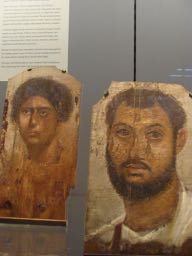The ordinary...the extraordinary...a continuum
Once, several years ago, I was walking around the block in the Castro in San Francisco. It was a Palm Sunday Procession with crucifer, incense, torches, vestments - the whole thing. People followed as we moved through the neighborhood of houses, churches, stores, bars, and lots of people. As we moved, one of the members sidled up to me and as he kicked at a cigarette butt wondered what the spiritual value of such an endeavor was, given the ordinary surroundings. I asked him in return if he thought that the path of the original Palm Sunday Procession was rarefied or ordinary. We often view such events through the scrim of holiness and sanctity, forgetting that they were actually begotten in the ordinary.
The doorway above, at Tintern Abbey, led from the refectory to a closet - a very ordinary space, built for the quotidian duties of a community of human beings. Turn a corner and you go from the ordinariness of a pantry into truly extraordinary and holy space - space that uplifted the community of men that were seeking God in a pilgrimage that was monastic life.
What is clear is that we need both - the ordinary and the extraordinary. These two elements help us to live and find meaning in that living. In a way it is like a window (actually a series of windows) just outside the Chapter House at Bristol Cathedral. What was waste glass, ordinary trash, was taken by some artisan and made into a combination of wonder and usefulness. As Archbishop Anthony Bloom once wrote, "humility is the situation of the earth." The earth often takes what we waste and transforms it into life. What is humble and discarded can become the stuff of holiness and a discovery of the divine.
I once commented in a sermon at Wheaton College in Norton, Massachusetts, that the very day, the minutes and hours, time itself, is an icon of Christ. That is one of the gifts of accompanying the Saint Mark's Choir in their pilgrimage at Ely and Bristol Cathedrals. In the repetitive nature of the Office, Evensong layers on the extraordinary over the ordinariness of time.
Just as ordinary trees and plants surround an extraordinary Gothic cathedral and their ordinariness is transformed into the beautiful - a continuum of granting meaning and purpose one to the other. A starry night, a cigarette butt, a found baptismal font - once a planter, a piece of bread, a cup of wine - extraordinary!
 |
| Baptismal Font at Deerhurst |
 |
| The Reserved Sacrament at Tewkesbury Abbey |
This evening was a revelation (again) to me. The man pictured below is Jonathan Dove, an English composer. The choir had sung his "Seek him that maketh the seven stars" at Ely Cathedral. At that hearing I was transfixed. When they sang it this evening at Bristol Cathedral I was transported into the realm of tears and joy.
 |
| Jonathan Dove |
The text is quite simple, a quote from the Prophet Amos, not usually known for his joy, and from Psalm139.
"Seek him that taketh the seven stars and Orion, and turners the shadow of death into morning" (Amos 5:8)
"Alleluia, yea, the darkness shineth as the day, the night is light about me. (Psalm 139)
If you would like to hear this extraordinary choral piece, press here. It is a recording of the piece by the Ely Cathedral choir.
The ordinariness of day and night become the splendor of knowing God's will and care for us, but it is a process, a progress, and a pilgrimage. "Seek him" requires the resolve to move and change. That was the gift that the choir gave to me this evening. It is the eve of the Transfiguration of Our Lord, and the like Peter, James, and John we might wish to continue in the glory. But the pilgrimage is almost at an end, and we are bidden to return to the ordinary, to the plain, to our lives. Yet, there is the chant to "seek him." And in seeking him amongst those around us to see the glory - the glory of the seven stars the work of him that made us.
 |
| A "starry night" in the Lady Chapel at Ely |
Thank you St. Mark's Choir for the privilege of accompanying you on your extraordinary mission.
























































